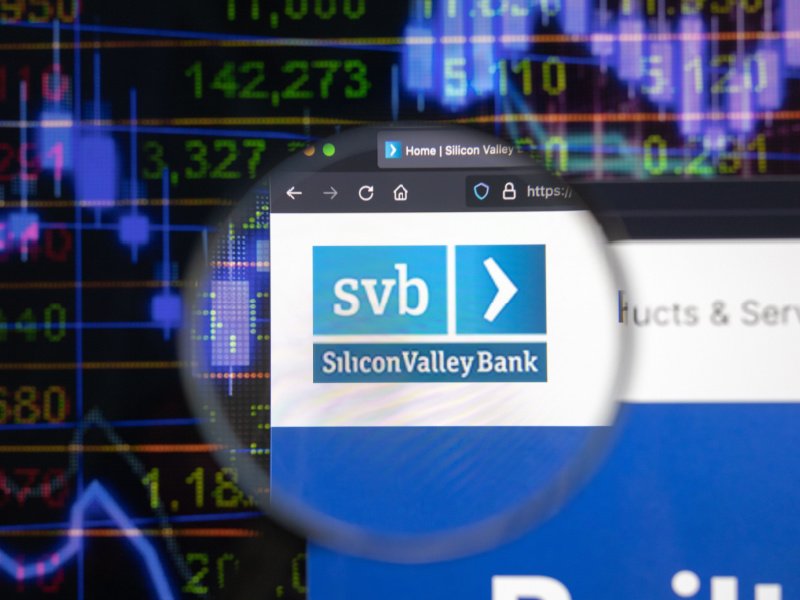Silicon Valley venture capitalists and tens of thousands of global venture-backed startups breathed a sigh of relief on Monday when the US government announced customer deposits in collapsed Silicon Valley Bank (SVB) would be protected. The backstop announcement enables founders to make payroll – at least for now.
But while the short-term crisis has passed, Silicon Valley and the global tech sector has been irrevocably changed in ways only now beginning to be digested. The knock-on effects will be felt deeply in Silicon Valley and outside of it.
“It feels like a funeral around here,” says Duncan Davidson, managing partner at post seed venture capital firm Bullpen Capital, based in San Francisco.
The unprecedented speed of the collapse of the tech sector’s preeminent – and mostly loved – bank has left VCs and founders scrambling to reassess their cash and risk management practices amid what was already the most severe downturn the tech sector has suffered since the dotcom bust in 2000-2001.
It has also left a gaping hole in the tech ecosystem – with tens of thousands of startups (including many dozens of Australian companies) losing their specialist industry banker.

No one knows yet how this hole will be filled. So far there has been no buyers for SVBs depositor account business and relationships.
“SVB has a special place in the innovation ecosystem. It’s a tragedy if SVB’s unique experience with the tech sector goes away,” says Davidson.
“There is some murmur of activity from a group of VCs and a large private equity firm to buy it and keep it going as before. I really hope someone does because no other bank understands the VC ecosystem as well.”
Silicon Valley Bank was formed 40 years ago because traditional banks did not know how to assess and credit rate a new breed of startups and growth companies that have delivered enormous economic value to the US economy.
SVB institutionalised a method of rating and backing startups based on the creditworthiness of the VC money backing the companies, versus traditional revenue vs profit forecasting of the startup companies themselves.
Most banks still don’t have the appetite to value companies this way, even if they had the expertise to do so. SVB was very good at it, which is why it was the preferred banker for the sector.
Silicon Valley Bank and the broader tech sector had experienced unprecedented growth for the better part of the last decade. When Covid hit, the irrational exuberance accelerated as investors saw tech companies as one of the few growth sectors in a pandemic world.
As the sectors’ preeminent bank, SVB growth nearly doubled to US$211 billion in customer deposits by end of 2021.
A year later, SVB, a regional bank specialising in tech finance, was the 16th largest lender in the US.
But outsized growth hides many ills. When post Covid normalisation began to return to the sector a year ago and then started experiencing the double-whammy of rising interest rates after years of riding the wave of zero interest rate policy, Big Tech and small tech companies experienced a crunch.
The new interest rate environment forced mass layoffs, spending cuts and more conservative company valuations.
Although riding high with more than US$200 billion in deposits at the end of 2021, SVB chief executive Greg Becker made a fatal error by investing short term, depositor money into long term assets and treasuries.
When interest rates started to rise over the past year, the value of those treasuries was massively diluted and largely unsellable. Further, nearly 90 per cent of SVBs deposits were uninsured, making them more prone to flight in times of trouble.
And sure enough, Greg Becker’s announcement last Wednesday that the bank was trying to raise fresh capital spooked VCs and founders alike.
And at breakneck speed over 48 hours, VCs and founders turned on their otherwise favoured bank, withdrawing some US$42 billion in the first 24hrs alone. On Friday the FDIC (Federal Deposit Insurance Corporation) stepped-in and took over the bank.
Davidson echoes the views of so many venture capitalists when he says the bank run was avoidable.
“First it was a dumb thing for CEO Becker to say “Don’t Panic” last Wednesday. Of course, That’s when everyone panics,” he said. “We had to say to all our founders, even though we knew it would lead to the contagion, that they must protect themselves.
“If their money gets locked up and they can’t make payroll they go down. It’s a prisoner’s dilemma and that’s why the industry reacted the way it did.”
While the crisis revealed there are way too many tech startups struggling with huge burn rates in a sector that has gone from plentiful cash and liquidity to a credit crunch in a very short period, there will also be much more scrutiny to come on the risk management failure by the SVB CEO and leadership.
In 2018 Greg Becker, who was also on the board of the San Francisco Federal Reserve until last Friday, was a leading lobbyist for removal of the Dodd Frank regulatory rules put in place to curtail bank risk after the 2008 GFC.
And with interest rates on the rise for some time, Becker knew what a wicked financial management problem the bank had.
Then he and a couple of other executives managed to sell a bunch of shares before SVB’s collapse. The stock sale is now being investigated by the SEC and US Justice Department.
“People thought the management of this bank, which was loved as banks go, would be on top of this. This was a blunder and it compounded really quickly,” says Davidson.
And again, where were the supervisors and regulators lately? KPMG signed off on SVB accounts with a clean bill of health just ten days before its collapse.
And while SVB last week became the second biggest bank failure in US history, it also marks the biggest test to date of the post financial crisis regulatory architecture designed to curtail risk and monitor it more closely.
According to the FDIC, the end of 2022, the US banking industry has some US$620 billion in unrealised losses on securities.
These are nervous times indeed for tech and beyond. Right now, the play is to diversify risk as much as possible.
Davidson says: “Now all VCs are telling their company founders to diversify the risk. Put your money across multiple banks and vehicles. They are all trying to develop new banking relationships at speed.”
Sandy Plunkett is a former journalist in Australia, former venture capitalist in the US, and now business consultant to clients in both countries.
Do you know more? Contact James Riley via Email.

